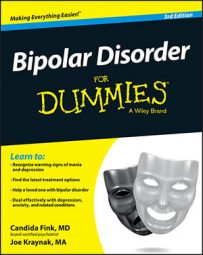Arriving at a diagnosis of bipolar disorder in children and adolescents is problematic because manic episodes typically first appear in late adolescence or early adulthood. A diagnosis of bipolar I disorder requires the presence of at least one manic episode. Mania (and therefore bipolar I) is much less common in younger adolescents and children, but it does occur.
A key feature in the criteria used to diagnosis mania is that the episode represents a change from baseline. A child may be chronically hyperactive, inattentive, or irritable, but the behavior isn't considered a manic episode unless the symptoms are substantially worse than usual for a period of time. The diagnosis can be tricky because many other childhood disorders have the same symptoms as bipolar disorder in children and teens, including the following:
Irritability and agitation can be due to many conditions including, but not limited to, autism spectrum disorder, language disorders, unipolar depression, anxiety, trauma, substance abuse, and attention deficit hyperactivity disorder (ADHD).
Chronic hyperactivity/high energy, talkativeness, and distractibility are core symptoms of ADHD and may be associated with substance abuse, trauma, and developmental disorders.
Sleep disturbances are common in childhood for a variety of reasons. Daytime fatigue from staying up too late, for example, isn't the same as the decreased need for sleep seen in mania. Trouble falling asleep has many causes, including typical adolescence, depression, and anxiety.
The subjective sensation of racing thoughts can be associated with anxiety as well as mania.
Impulsivity (poor judgment and high levels of risk taking) is often found in ADHD; it can also be related to typical adolescence, substance abuse, depression in which someone has given up and shows no regard for his own safety, and other developmental disorders.
The growing consensus is that some form of episode — a change from baseline — needs to happen to identify bipolar disorder in children and distinguish it from other childhood psychiatric or developmental disorders. The following sections briefly describe some of the most common conditions that complicate the diagnosis of bipolar disorder in kids — conditions that should be considered before arriving at a diagnosis of bipolar disorder.

